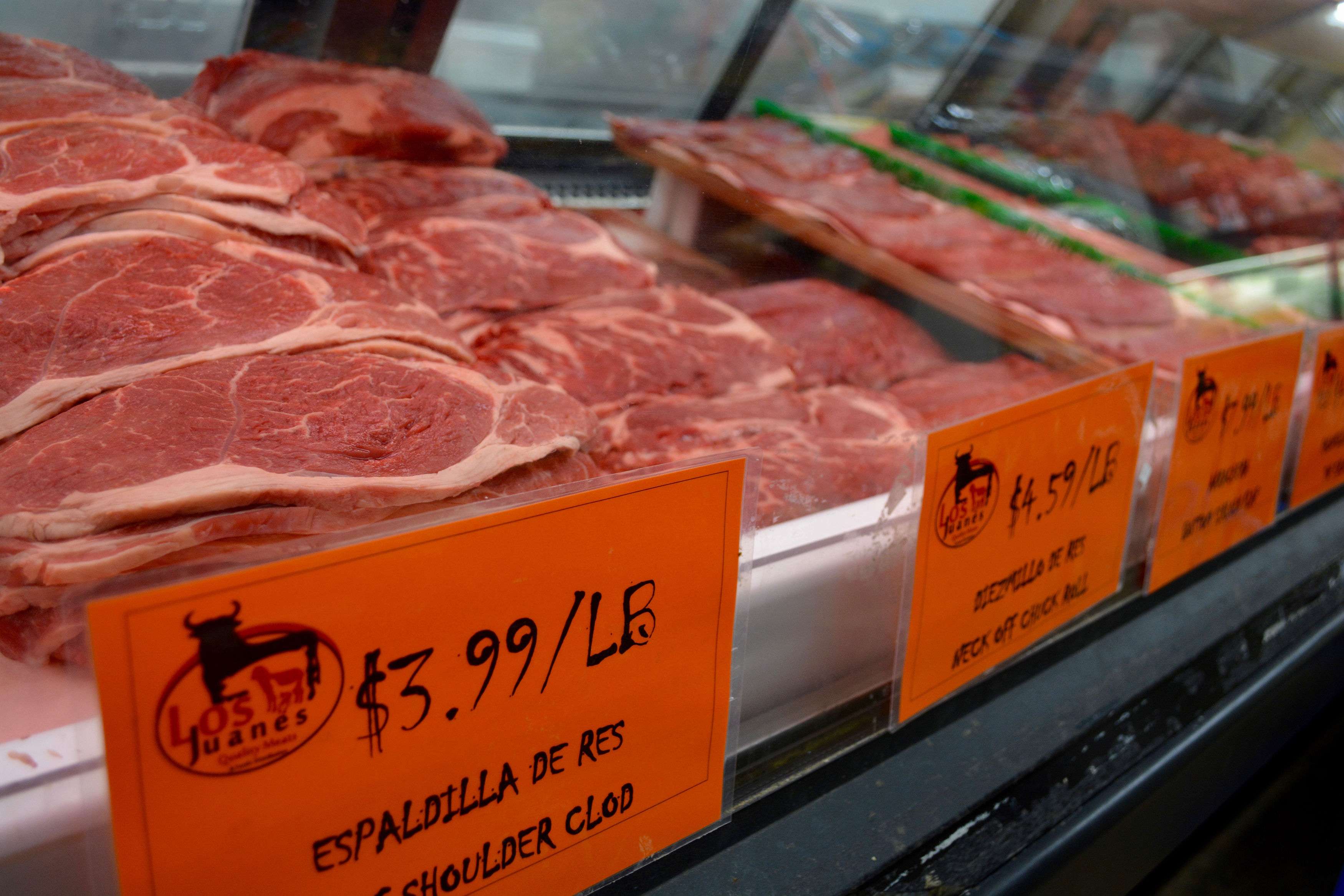Browse Through Bagley Farms Meat Market Edwardsville IL for Farm-Fresh Meat and Specialized Cuts
Browse Through Bagley Farms Meat Market Edwardsville IL for Farm-Fresh Meat and Specialized Cuts
Blog Article
Discover the Art of the Butcher's Cut in a Modern Meat Market
In the ever-evolving landscape of modern-day meat markets, the butcher's cut has actually transcended its conventional roots, combining age-old workmanship with contemporary techniques. Today's butchers are not just cpus of meat; they are knowledgeable artisans who highlight sustainability and moral sourcing. Their expertise in choose and preparing cuts customized to certain culinary requirements provides an unequaled dining experience. What truly establishes the contemporary butcher apart is their capability to create a deeper connection between customers and the origins of their meat. How do these masters balance custom with advancement, and what effects does this have for the future of meat consumption?
Advancement of Butchery Methods
The development of butchery methods reflects a rich tapestry of development and adjustment driven by developments in technology, modifications in consumer need, and a much deeper understanding of meat scientific research. Historically, butchery was a craft passed down via generations, with techniques honed over centuries to optimize return and taste. However, the industrial change ushered in mechanization, transforming traditional practices and allowing large processing.
The mid-20th century saw butchery methods additionally refined by scientific understandings right into muscular tissue biology and meat aging, boosting both tenderness and preference. Developments like vacuum cleaner packaging and refrigeration prolonged product shelf-life, allowing butchers to diversify offerings and improve quality control. This duration additionally marked the increase of specific equipment, such as band saws and meat slicers, which raised accuracy and performance in meat handling.

Computerized systems now assist in monitoring animal provenance and optimizing cuts to fulfill specific client preferences. Additionally, a rebirth in artisanal butchery has emerged, blending typical skills with modern understanding to cater to customers looking for ethical and lasting meat choices.
Comprehending Meat Cuts
Understanding the ins and outs of meat cuts is important for both butchers and customers looking for high quality and value. For butchers, precise cuts mirror skill and regard for the craft, guaranteeing very little waste and ideal return.

Comprehending muscle mass structure is important; muscles utilized extra regularly by the animal tend to be tougher and are best fit for sluggish cooking methods, while less-used muscular tissues, like those located in the loin, are a lot more tender and perfect for cooking or roasting. Knowledge with these differences encourages customers to make enlightened options, improving their culinary ventures.
Picking High Quality Meat
Picking the ideal meat includes even more than simply picking an aesthetically appealing item from the screen. The art of choosing top quality meat calls for a discerning eye and understanding of certain characteristics that represent quality and excellence.
Second of all, think about the marbling, which describes the white streaks of fat within the muscular tissue. Appropriate marbling is a vital indicator of inflammation and flavor, as it thaws during cooking, boosting the meat's juiciness. Bear in mind, higher marbling frequently correlates with superior top quality cuts, such as USDA Prime.
Structure is another vital variable; meat must feel strong to the touch, not you can look here slimy or extremely soft. In addition, bear in mind the aroma. Fresh meat should have a tidy, neutral scent, devoid of any kind of sour or repulsive odors.
Combining Cuts With Cooking Techniques

Conversely, harder cuts like brisket and chuck roast are rich in collagen, which breaks down into gelatin when cooked slowly. These cuts are ideal for braising or slow-moving roasting, enabling the meat to soften with time and develop deep, complicated flavors. Cuts such as brief ribs and pork shoulder get on well with slow-cooking techniques, where extended cooking times change their durable appearances into succulent meals.
Lamb shanks and oxtail, which need prolonged cooking to tenderize, are excellent candidates for stewing or sluggish simmering. These techniques coax out rich, passionate flavors while preserving dampness. By understanding the one-of-a-kind features of each cut, cooks and home chefs alike can elevate their culinary developments, making sure each meal is both satisfying and memorable.
The Butcher's Function Today
Browsing the evolving landscape of the modern meat market, the butcher's role today expands past plain prep work of cuts. Contemporary butchers are cooking craftsmens, instructors, and advocates for sustainable methods. They link useful source the void between the farm and the fork by guaranteeing ethical sourcing, comprehending animal husbandry, and prioritizing openness in the supply chain. This shift mirrors the expanding customer demand for high quality over quantity, where provenance and animal well-being are critical.
In addition to crafting precise cuts, butchers currently engage straight with clients, using cooking guidance and tailoring options to fit individual demands and choices. Their expertise in meat aging, marbling, and taste accounts encourages customers to make enlightened choices, boosting their cooking experiences. This individualized solution exemplifies the butcher's advancing duty as a trusted consultant in the kitchen area.
In addition, butchers are crucial in lessening waste, using entire pets to produce diverse items such as sausages and supplies. This detailed technique not only appreciates the pet yet likewise straightens with modern sustainability goals. In this way, the modern butcher symbolizes both tradition and innovation, adjusting to an ever-changing market while preserving the artistry and integrity of their craft.
Verdict
The contemporary butcher's craft delicately weaves standard strategies with modern-day innovations, stressing sustainable methods and ethical sourcing. Proficiency in comprehending varied meat cuts and high quality indications equips butchers to supply enlightened suggestions, aligning specific cuts with optimum food preparation techniques. This competence not just boosts cooking experiences however also strengthens the connection between customers and the beginnings of their food. By honoring historic techniques while accepting modern demands, the this link butcher's role remains important in today's advanced meat market (bagley farms meat market edwardsville il).
Report this page